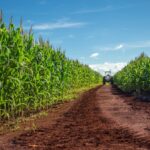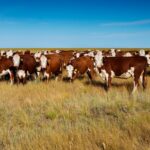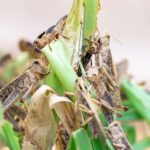Planning and designing your farm layout in South Africa requires careful consideration of various factors. Here are some tips to help you in the process:
- Determine your farm’s goals: Clearly define the purpose of your farm, whether it’s crop production, livestock farming, or a combination of both. This will influence the layout and infrastructure requirements.
- Study the land: Conduct a thorough assessment of the topography, soil conditions, drainage patterns, and prevailing winds on your property. This information will help you optimize the layout and minimize potential challenges.
- Consider water availability: Adequate water supply is crucial for farming. Identify the water sources on your land, such as rivers, boreholes, or dams, and plan the layout accordingly. Ensure efficient irrigation systems and easy access to water points throughout the farm.
- Zoning and division of areas: Divide your farm into different zones based on the type of farming activities you plan to undertake. Separate areas for crops, grazing, housing structures, storage, and equipment should be established for better organization and management.
- Accessibility and infrastructure: Design the layout with easy access to roads, farm entrances, and major transportation routes. This will facilitate the movement of machinery, vehicles, and products to and from the farm. Additionally, plan for necessary infrastructure like farm buildings, storage facilities, workshops, and livestock housing.
- Crop rotation and livestock integration: If you intend to incorporate both crops and livestock, consider implementing a crop rotation system to enhance soil fertility and manage pests. Integrate grazing areas with proper fencing and watering points for livestock management.
- Environmental factors: South Africa’s climate varies across regions, so take into account factors like temperature, rainfall patterns, and wind direction. This knowledge will help determine suitable crops and livestock breeds for your farm.
- Seek expert advice: Consult with agricultural extension services, local farmers, and professionals in the field to gain insights and recommendations specific to your area. They can provide valuable guidance on optimal layouts, crop choices, and best practices.
- Sustainability and conservation: Incorporate sustainable farming practices and conservation methods into your design. This may include water harvesting, erosion control, windbreaks, and planting trees for shade and wind protection.
- Future expansion and flexibility: Plan for future growth and expansion of your farm. Leave enough space for potential infrastructure development, expansion of farming activities, or diversification of crops and livestock.
Remember that the specific requirements and considerations for farm layout in South Africa can vary depending on the region, climate, and the type of farming you plan to undertake. Adapt these tips to suit your unique circumstances and always prioritize sustainability and efficiency in your design.
Join 'Farmers Mag' WhatsApp Channel
Get the latest Farming news and tips delivered straight to your WhatsApp
CLICK HERE TO JOIN






